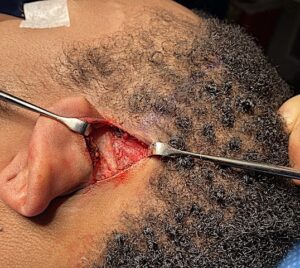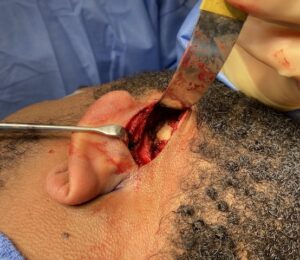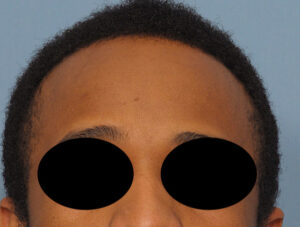Background: The shape of the head is largely created by the skull bones with one exception….the side of the head. While there is bone on the side of the head, this bone is covered by the large temporal muscle. Running from the side of the eye and forehead the muscle covers the entire side of the head. The location of most of the muscle is bordered by the bony temporal line throughout its entire superior course.
The temporal muscle is quite thick with its greatest thickness by the side of the eye due to the concave temporal fossa bone. (anterior temporal muscle) As the muscle leaves the temporal fossa it crosses over the convex temporal bone where it gets thinner…but it is still thicker than most realize. (posterior temporal muscle) Above the ear it is often as thick as 10mms and then gets much thinner as it approaches the back of the head.
The thickness of the temporal muscle over the convex temporal bone serves as the basis for the head narrowing procedure…temporal reduction surgery. Besides making the side of then head more narrow, removal of the posterior temporal muscle may have some secondary benefits. Some patients may also get headache relief and hats and eyeglasses may fit better.
Case Study: This male desired to have a less wide head shape. He also had migraines which usually emanated from the temporal muscle. He also had trouble with eyeglasses as they fit fit too tight and pinched the side of his head.

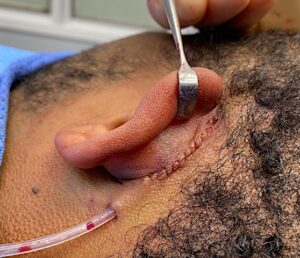
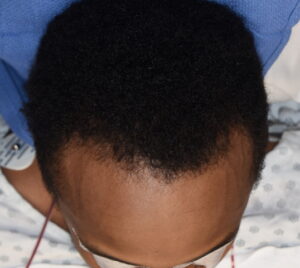
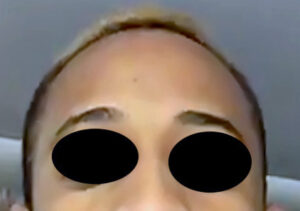
Case Highlights:
1) A wide side of the head is most effectively reduced by posterior temporal muscle removal.
2) The posterior temporal muscle can be removed through a hidden postauricular incision.
3) Besides reduction in head width posterior temporal muscle removal may help with migraine headaches and tight fitting eyeglasses.
Dr. Barry Eppley
Indianapolis, Indiana



